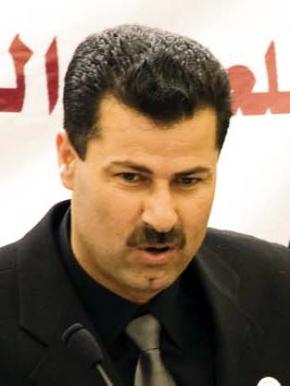Tag: Demonstration
-
400 days and counting: nonviolent Bil’in activist Adeeb Abu Rahmah to remain incarcerated
IMMEDIATE RELEASE 2 September 2010 Ramallah, WEST BANK A military court of appeal yesterday (1st Sept. 2010) rejected a petition calling for the release of Adeeb Abu Rahmah, a leading activist from the West bank village of Bil’in, imprisoned in Israel’s Ofer military detention centre since 10th July 2009. The decision comes 8 days after…
-
Abdallah Abu Rahmah: Know the facts and act now for the freedom of a nonviolent freedom fighter
27 August 2010 The West Bank village of Bil’in has become a symbol of the wider popular resistance movement in Palestine. Abdallah Abu Rahmah, head of Bi’in’s Popular Committee, is one of many key organizers of peaceful resistance that Israel has used legal means to persecute. He was convicted on Tuesday of two out of…
-
Criminalizing peaceful protest: Act up for Abdallah Abu Rahmah
25 August 2010 | Popular Struggle UPDATE: Baroness Ashton condemns Bil’in leader’s conviction; Attorney: “International community must take a tough stand on human rights defenders.” Abdallah Abu Rahmah, the coordinator of the Bil’in Popular Committee, was yesterday convicted of incitement and organizing illegal marches by an Israeli military court. The conviction concluded an eight months…

